This was a take-off like I’ve never seen from a raptor.
But before we go further a brief discussion of rousing is in order. Rousing is the action of a bird that raises its feathers before vigorously shaking them. The process helps to rearrange the birds plumage and is often a sign of a relaxed and content bird. It’s usually done while the bird is at rest and often after preening.
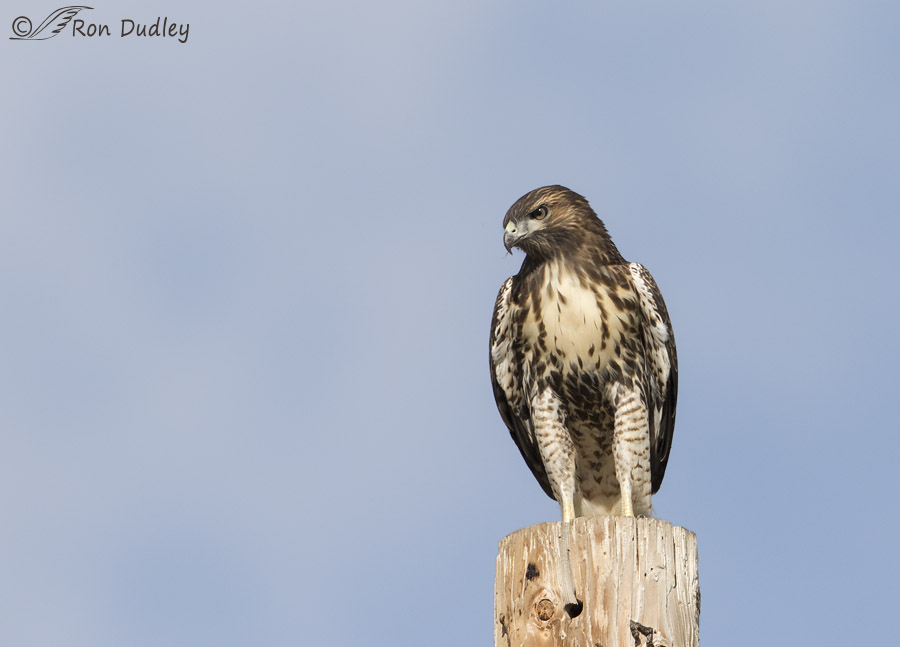
1/2500, f/7.1, ISO 400, Canon 7D Mark II, Canon EF500mm f/4L IS II USM +1.4 tc, not baited, set up or called in
Yesterday morning in Box Elder County I had my lens trained on this juvenile Red-tailed Hawk as I waited for it to take off. The bird had just finished off a vole for breakfast and you can still see blood and debris on its beak. It did some minor preening…
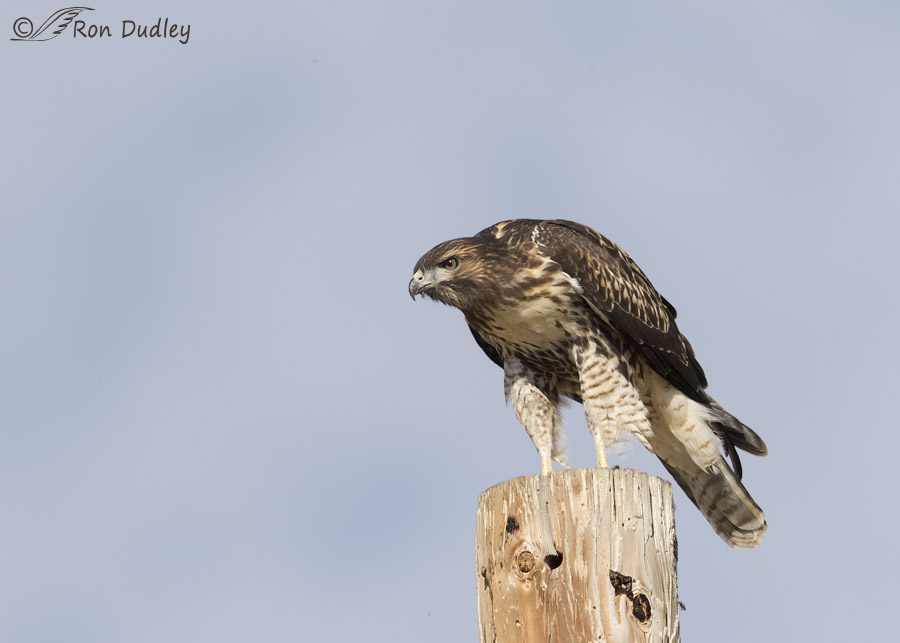
1/2500, f/7.1, ISO 400, Canon 7D Mark II, Canon EF500mm f/4L IS II USM +1.4 tc, not baited, set up or called in
before it turned on its perch into the direction of the breeze and at this point my shutter finger was ready.
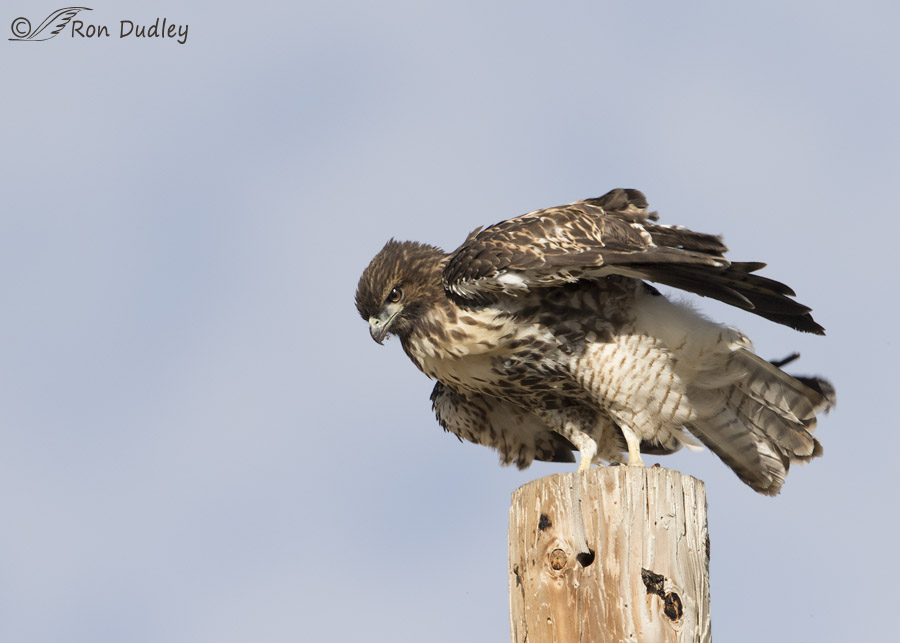
1/2500, f/7.1, ISO 400, Canon 7D Mark II, Canon EF500mm f/4L IS II USM +1.4 tc, not baited, set up or called in
When the hawk began to rouse I fired off a burst because I sometimes get interesting poses that way. But this bird surprised the dickens out of me. In mid-rouse it…
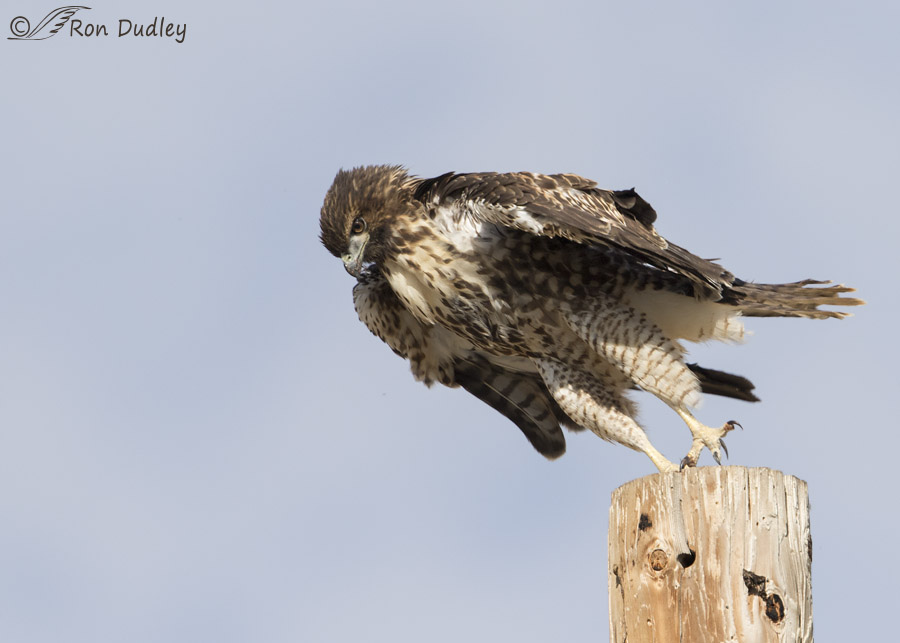
1/2500, f/7.1, ISO 400, Canon 7D Mark II, Canon EF500mm f/4L IS II USM +1.4 tc, not baited, set up or called in
leaped from its power pole perch with its wings still at its side…
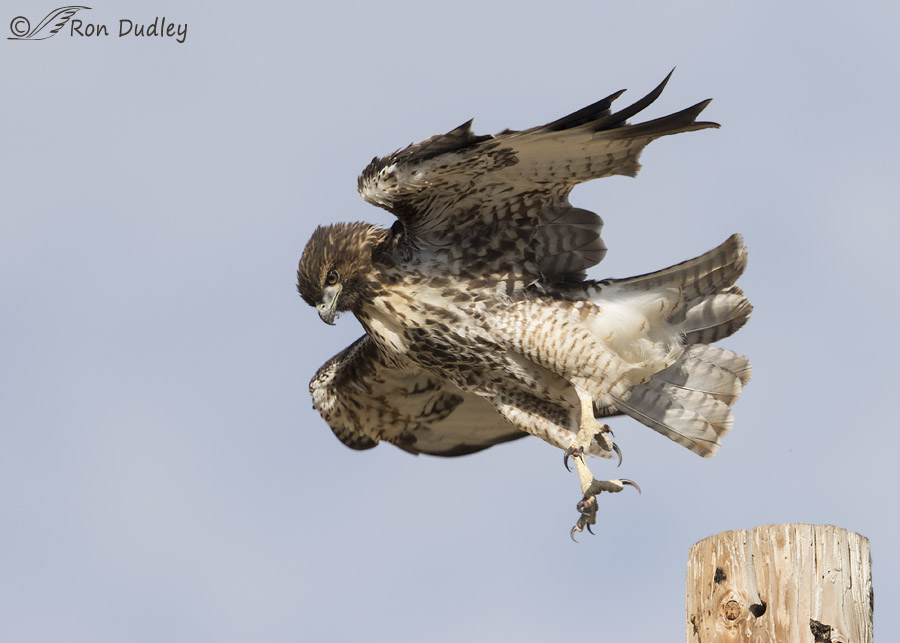
1/2500, f/7.1, ISO 400, Canon 7D Mark II, Canon EF500mm f/4L IS II USM +1.4 tc, not baited, set up or called in
and continued to rouse in mid-air.
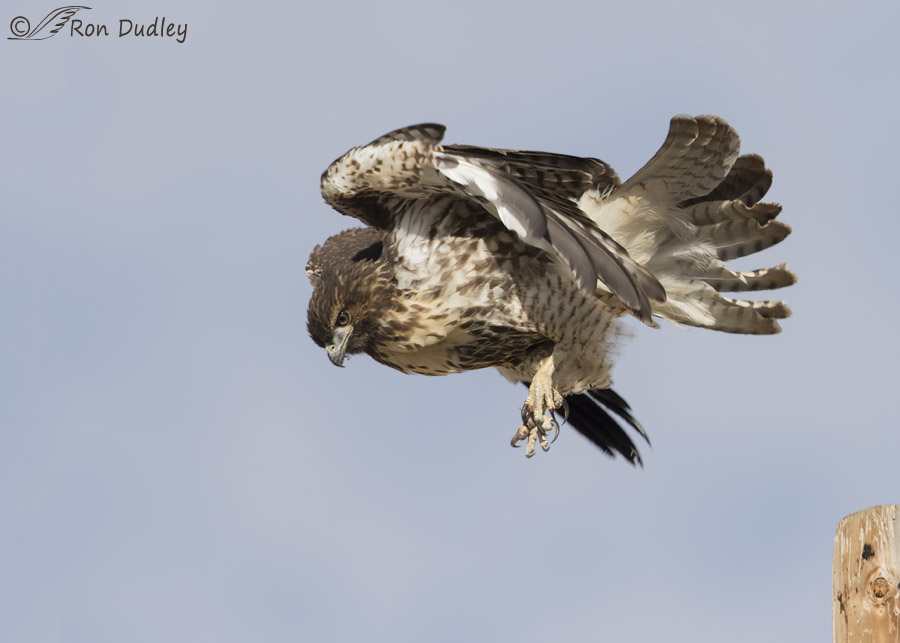
1/2000, f/7.1, ISO 400, Canon 7D Mark II, Canon EF500mm f/4L IS II USM +1.4 tc, not baited, set up or called in
In the next frame it was still shaking its feathers as partly evidenced by its tail twisted to the birds left and the wings still unextended. This action was very quick – the last four frames presented here only took .4 second and since I wasn’t prepared for the take-off during the rouse I clipped body parts after this shot.
I don’t recall having ever seen a combined rouse and take-off from a raptor before. If I have I’ve never photographed it. Maybe this young bird is still learning the raptor-ropes…
Ron
PS – All of us have seen birds rouse. Even so, there’s an interesting clip here of a hawk rousing (scroll down to “rouse” and click the link). The rousing of the hawk in my images was just as vigorous as it is in the clip but my bird did it in flight.
A personal note: The posture of the bird (with its wings held to the sides of its body as it jumps from the perch) in the 4th image reminds me of myself. When I was 10 years old we stayed at a motel in Las Vegas with a swimming pool. I dived off the board with my arms held tightly to my sides and entered the water head first. I scraped the rough bottom of the pool with my nose and deeply split my upper lip below my nose. I carried that curved scar for many years. When I smiled it looked like I had two of them…


Ha! this is most interesting-great captures!
Wonderful post Ron–brought a big smile to my face 😉
“Rousing” is the word, Ron!!!! Wonderful!!!
Yes, it is, Lois. Thank you.
What a beautiful Hawk. I’m so glad you posted these pics. I have never seen a Hawk dive off like that. Beautiful pictures.
At least you were on a board. My Hubby decided he was Superman, and jumped off their roof into the pool when he was 10. Cape and all. It’s a wonder he didn’t end up wounded like you.
“At least you were on a board.”
Well, I was that time, Jean, but I wasn’t every time. I did something similar to what your husband did, but I was a little younger. I jumped off our well pump-house roof thinking I could fly because I was dressed in a Mickey Mouse outfit. It had a cape too – that cape is so deceiving to little kids. The pump-house was only about 6′ high so I didn’t get badly hurt but it was still quite a shock when I hit the ground instead of zooming around in the sky…
Oh, great, now you’ve given something ELSE to watch out for!
Great timing to get any part of this series. Fascinating to think about if it was just a learning curve thing or, as Dick suggests, maybe that itch was persistent.
Thanks, Wally. There’s always something to watch out for, even if we don’t yet know what it is…
What an amazing thing to see. The natural world is endlessly fascinating isn’t it?
Ouch on your dive. Big ouch.
And thank you to Dick Harlow for the itch explanation. Which has made me itch in sympathy.
I bled for hours after hitting the bottom, EC – probably should have had stitches…
Interesting what the youngsters find to do. Always something new and often a lttle screwy. My first dive was off of a dock in Great Bear lake. With arms extended, palms pressed firmly together, I dove right, straight into the mud at the bottom…and stuck! Fortunately rescued by a laughing uncle determined to teach me to swim and dive.
Nice to see you back here Patty. I have missed your comments. And those of your evil sidekick. On the screwy front my partner broke his arm as a young thing walking along a wall – backwards. When asked why he said going the way you faced was boring.
Hi Ron, this is a fun one. I presume the bird did not plunge head first to the ground and scrape its beak (I cringed at your diving story), or hit the wires below. What happened after your last image?
Thanks, Betsy. The pole the hawk was perched on was high on a hill above a stream. The bird dived through the wires toward the stream but I lost track of it after that.
Beautiful sequence Ron. The Hawk almost looks “electrified”in it’s rousing!
You’re right, John, especially in the 5th image. Thank you.
Fascinating. The swiftness of the entire action is what got me.
It was very quick, Arwen, and unexpected so I almost missed the take-off.
Sensational and very interesting Ron! Tanks for sharing your incredible skill!
Charlotte
Thank you, Charlotte.
Great shots Ron, probably had an itch and could only get at it by rousing! I have seen some other species do this in mid air, e.g. Osprey to get the water off their feathers a young Cooper’s for no apparent reason, but my guess was he had an itch and that was the only way he could relieve it.
What is interesting about your series is the focus of the eyes and if you look at each picture there is a shift from focus to something else in the look of the eye. Interesting set, thanks for sharing.
“What is interesting about your series is the focus of the eyes”
Dick, I’m sure the focus shift you mention was due to several wires directly below the bird that it was attempting to avoid.
I’ve also seen several species rousing in mid-air, including Forster’s Terns and Osprey, but this rouse combined with take-off was a first for me.